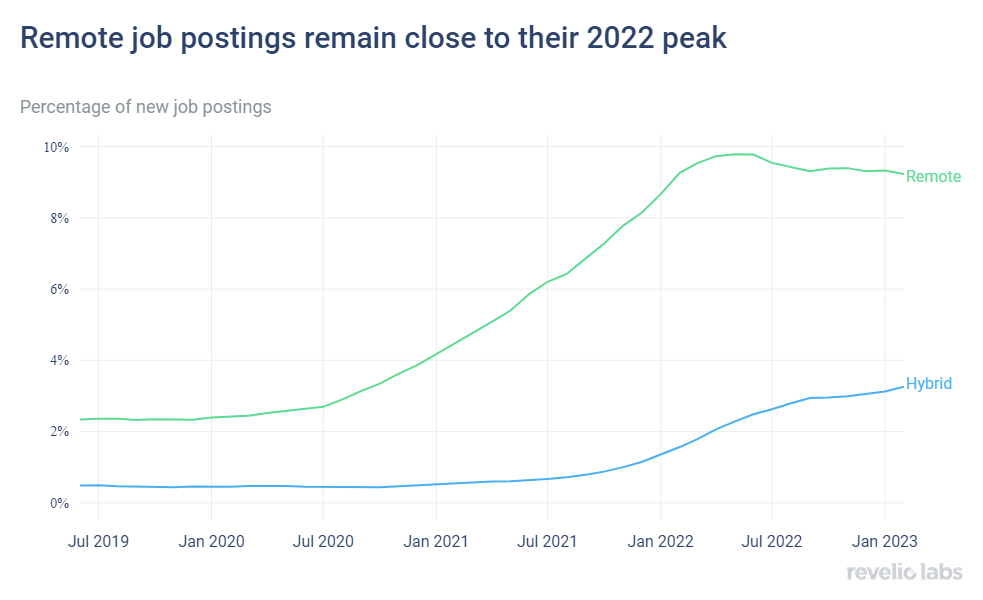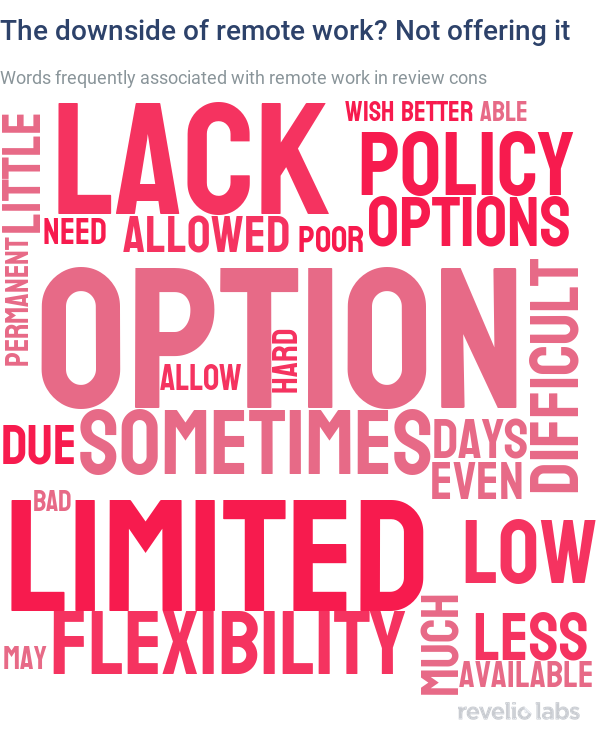Think Twice Before Mandating Return-to-Office
If the job can be done remotely, let it be done remotely.

In 2022, the share of remote positions leveled off at roughly 3.5 times its pre-pandemic level, and the share of hybrid positions increased to 6 times its pre-pandemic level.
Workplace reviews suggest that workers see the lack of a remote option as a significant downside.
In-person positions that can be done remotely tend to face higher levels of attrition.
Three years into the remote-work revolution, how do workers feel about working from home? With the share of remote job postings at over 3 times its pre-pandemic level, and the share of hybrid job postings at 6 times its pre-pandemic level, this question remains central.


Sign up for our newsletter
Our weekly data driven newsletter provides in-depth analysis of workforce trends and news, delivered straight to your inbox!
It’s no wonder that working from home is here to stay given how much workers prefer it, at least as an option. When remote work is mentioned in employee reviews, it’s generally listed as a pro of the job, Revelio Labs labor market analytics show. Further, when it’s mentioned as a con, it’s almost always referring to an employer who refuses to allow it. Here are the most commonly used words in reviews that mention remote work as a con—the frustration with inflexible employers is front and center:

Employee frustration with the lack of a remote option is highest in jobs where remote work would be feasible, but their workplace is in person. We can see this by comparing our measure of the remote suitability of each position to the position’s actual remote status. Positions with a larger “misalignment” between their remote suitability and their remote status, as captured by the average difference between these measures for a given company and role, tend to face higher attrition rates, our labor market analytics reveal.




